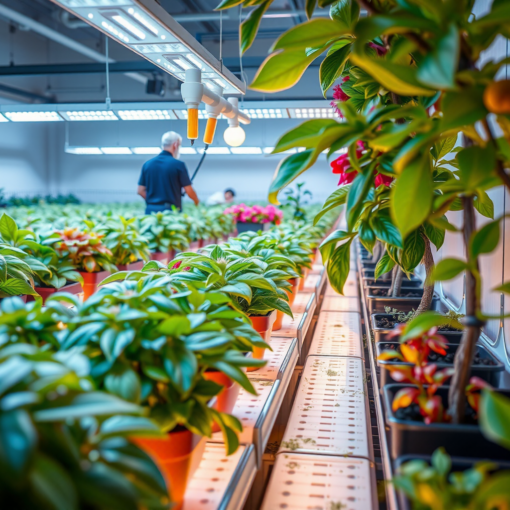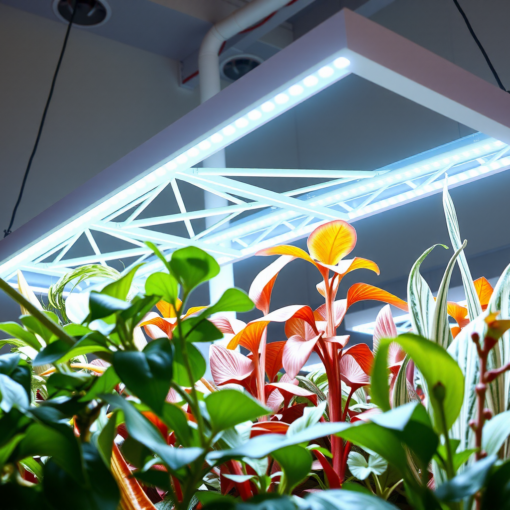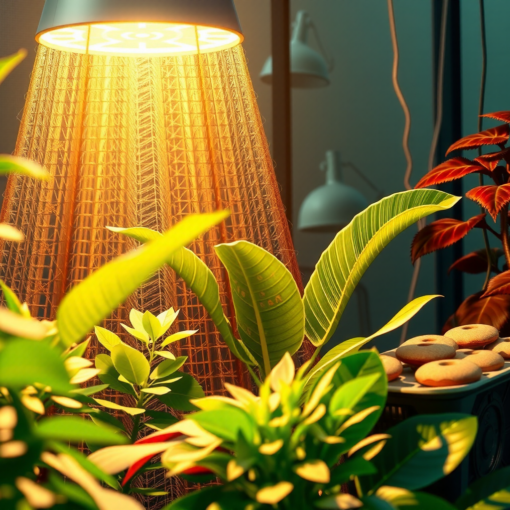¿Estás buscando una fuente de luz adecuada para el crecimiento saludable de tus plantas? Las luces de cultivo son un todo necesarior para muchos jardineros urbanos, cultivos de interior, invernaderos y viveros. Dependiendo de los requisitos de luz de tus plantas, hay una variedad de luces a elegir. If you are curious about grow lamps, this article will provide you with the information you need to make an informed decision.
Understanding light and photosynthesis
Plants need light for photosynthesis, the process of capturing the energy of the sun and using it to produce glucose. There are two main types of lights used to grow plants: natural light and grow lights.
The natural sunlight includes a variety of wavelengths, including visible, ultraviolet (UV) and infrared (IR) light. Red and blue light are especially important for photosynthesis. These colors stimulate the production of chlorophyll. Plants also use green, yellow and orange light for photosynthesis, but in much smaller proportions.
Growing lamps are designed to provide plants with specific wavelength light. There are different types of grow lights, such as LED, fluorescent, halogen, incandescent and sodium vapor lamps. Each of these types of lights has different light wavelengths with different intensity and direction. Determining the best option for your plant will depend on your specific growing needs.
The differences between LED, fluorescent, halogen, incandescent and sodium vapor lamps
LED: These lights use doide emitters of light (LED) to generate light. They are known for being more energy efficient and for using several color wavelengths to facilitate optimal plant growth. These lamps also last longer than other types of lamps.
Fluorescent: These lamps are an increasingly popular option for plant growth. They generate less heat than incandescent lights and offer a soft and balanced light with several wavelengths necessary for photosynthesis. Their major disadvantage is that they are more expensive than incandescent lights.
Halogen: These lights have an incandescent filament instead of a fluorescent tube. These lights have a white color and a wide range of wavelengths. They generate excessive information, so it is recommended to use reflectors to limit the emission of light.
Incandescent lamps: These lamps produce hot light using a metal filament in their interior. These drums have a white light and a limited wavelength. They are available in two colors: white and black. White lights provide physical light of wavelengths in the green, yellow and red range. On the other hand, black lights only emit blue and green light.
Sodium vapor lamps: These lights are usually used for commercial size crops. They emit intense yellow and red light. These lamps produce a lot of heat, so they require a heating and cooling system.
Choosing the right light for your plants
Depending on the type of plant you are growing, the right light may vary. Indoor and greenhouse plants may require a specific level of limit and ammonia-laden light. It is important to consider the intensity, quality and type of light that will be given to the plant. This information will help you determine which of the types of growth lights will be best for your plants.
Lighting allows gardeners to have total control over the growing environment. This means that you can adjust the operating time, light intensity and light wavelength type. These options allow you to adapt the system to the specific needs of your plant.
Conclusion
Growth lights are a valuable resource for many urban farmers, growers and nurseries. By using growth lights, you can ensure that your plants get the right amount of light for healthy photosynthesis. It is important to know the type of light that is best for each plant, as well as its intensity and operating time. If you understand how photosynthesis is carried out, you will be able to make a better decision about the type of light needed for successful cultivation.
In short, growth lights offer a useful solution for even the smallest grower. We must make sure we understand how photosynthesis works before making a decision about the light that best suits our plants.






